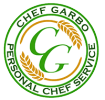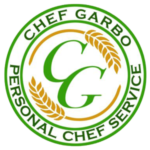
Garbo’s Personal Chef Service
Healthy Meals for Busy People!
Specializing in Weekly Home Prepared Meals
Personal Chef San Francisco – Chef Garbo – Monterey Abalone Farm
The Mysterious Underworld of the Monterey Abalone Farm
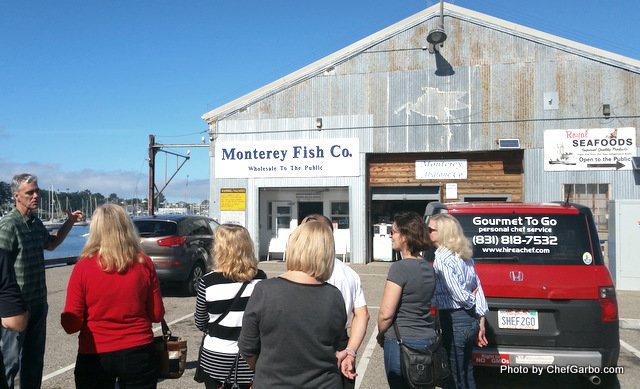
Personal Chef San Francisco – Monterey Abalone Farm
Personal Chef San Francisco – Chef Garbo’s Excellent Adventure
It’s Personal Chef San Francisco – Chef Garbo here and I’m reporting about a spectacular field trip to Monterey… It was a beautiful sunny day in Monterey Bay where the San Francisco Bay Area Chapter met at the very end of the Municipal Wharf #2. On this very same wharf John Steinbeck walked while looking for a boat to take him and Ed “Doc” Ricketts to the Sea of Cortez in 1940. Chef Bourget coordinated this Chapter field trip where we learned all about Abalone farming.
Abalone Farm Tour
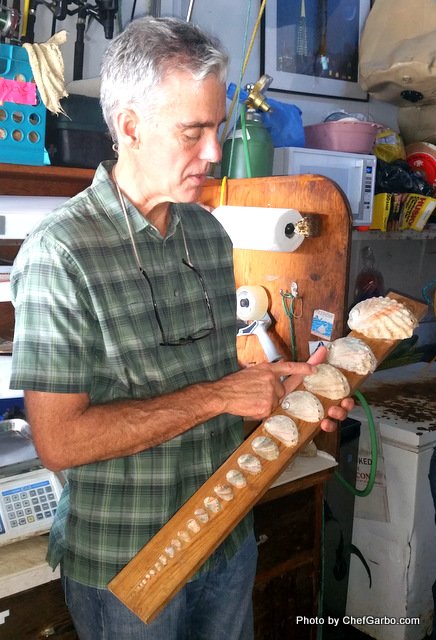
Personal Chef San Francisco – Art Seavey’s Abalone Farm
The Monterey Abalone Company – Monterey Bay
As our group of 10 entered the small office inside the Monterey Abalone Company we saw papers, shells, and instruments scattered about. Whilst listening to our host Art Seavey, owner and master abalone farmer, one couldn’t help but notice the large trapdoor in the middle of the wooden floor.
The Trap Door
Soon, all eyes were fixed on Art as he demonstrated how to descend through the trapdoor on a bolt upright, wet and steely ladder leading to the dark and cavernous underworld of the abalone farm beneath the pier. We all followed Art down, very carefully, one by one. It was gloomy and the planks were weeping all around us. There was a salty smell in the air that was both fishy and animal. A pathway of planks lead to the end of the pilings. We heard pigeons cooing above, while a cacophony of barks and splashes erupted from the darkness within.
Walking the Planks
As we walked the narrow slippery planks we saw large shapes emerge and discovered that we had startled the California sea lions lounging among the perilous pathways. They raised their heads, provoked by our disturbance, and continued their deafening clamor. Eventually they shuffled off like drunken sailors lumbering into the murky waters as they were clearly done with us.
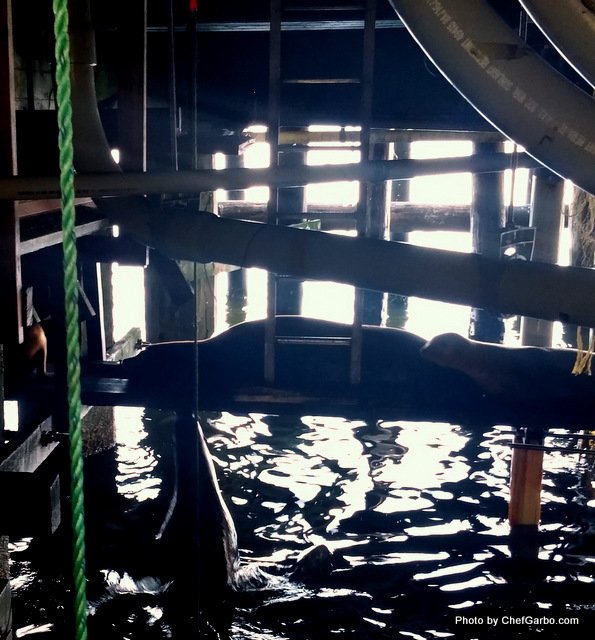
Personal Chef San Francisco – Sea Lions – Monterey Abalone Farm
The Mysterious Underworld
Unbeknownst to the tourists sauntering overhead, there is a vast sea farm of 150,000 abalone being raised and harvested beneath the wharf. A recent article published by the Earth Island Journal described Art Seavey’s unique operation thusly… “Sturdy mesh cages hang in the sea from a network of beams. There are 150 to 6,000 abalone per cage, depending on the size of the shells within. A system of pulleys and ropes is in place to lift the cages out of the water. The enclosures protect the abalone and mollusks from the marauding sea otters who constantly circle in search of snacks.” Art’s farm raises thousands of these sea creatures, once a plentiful gourmet treat on Coastal California, but due to over harvesting, are now so rare that they are banned from commercial fishing and restaurants can charge as much as $45 for a plate of sea snails.
Seavey Vineyard Wines, Abalone and Pot Luck Feast
After our tour, Chef Bourget led the Chapter to her fiancée’s family summer home located in Seaside adjacent to Monterey Bay.

Personal Chef San Francisco – Chef Bourget
Abalone Shucking
There, Art taught us how to shuck, clean and tenderize the abalone we purchased. Then, Chefs Bourget and Dawn Buccholz demonstrated how to convection steam the prepared abalone compared to traditional baking. After the pounding and shucking lessons, we gained a new appreciation for the high price of abalone because they are difficult and labor intensive to raise and can take up to 7 years to mature. Plus, we learned first hand how time consuming they are to prepare.
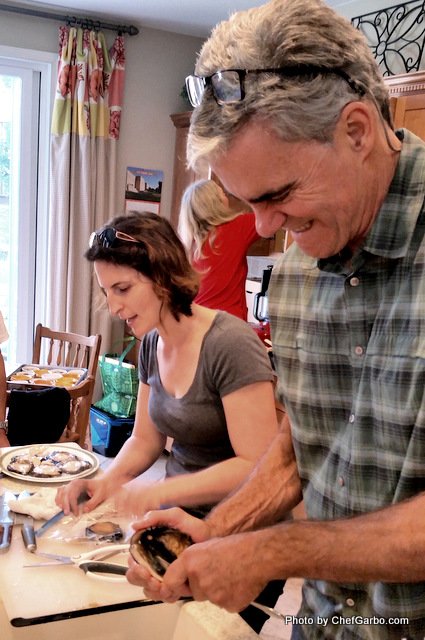
Personal Chef San Francisco – Art Seavey – Abalone Shucking

Personal Chef San Francisco – Chef Bourget’s Abalone Appetizers
Seavey Wine Tasting Flight
In addition to the hands on lessons in shucking, Art Seavey gave us a wine tasting flight from his very own family winery named Seavey Vineyard located in the Napa Valley. They’re known for producing world-class, age worthy Cabernet Sauvignon, Chardonnay, and Merlot. According to Robert Parker, the Seavey family has…“The most underrated great Cabernet produced in Napa Valley….with perhaps the best second label wine in Napa, the Caravina Cabernet…keep in mind I have Seaveys going back to 1990 in my cellar.” Robert Parker, Wine Critic, The Wine Advocate, December 2008.
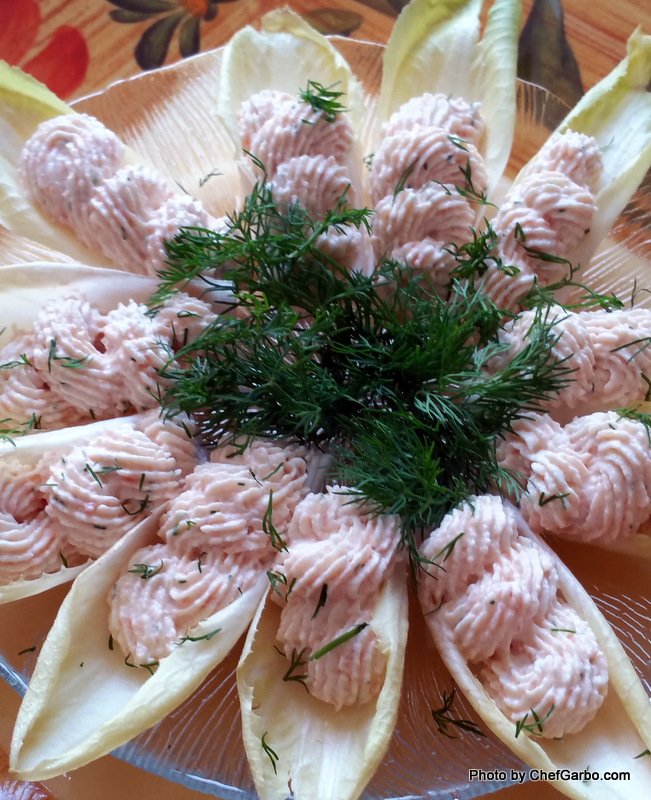
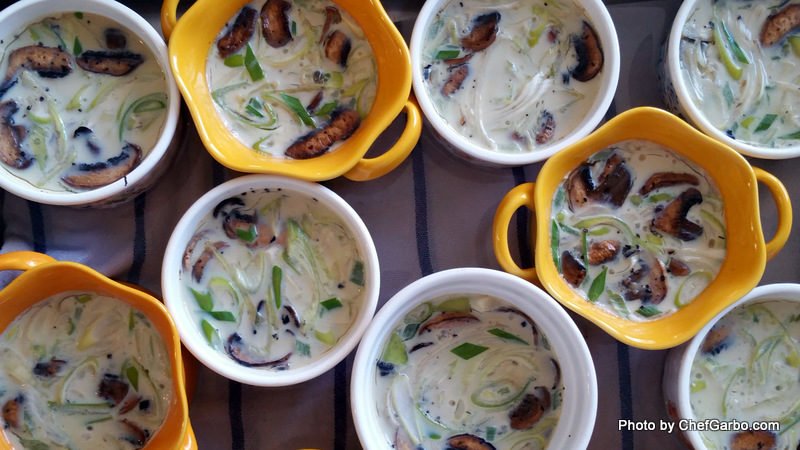
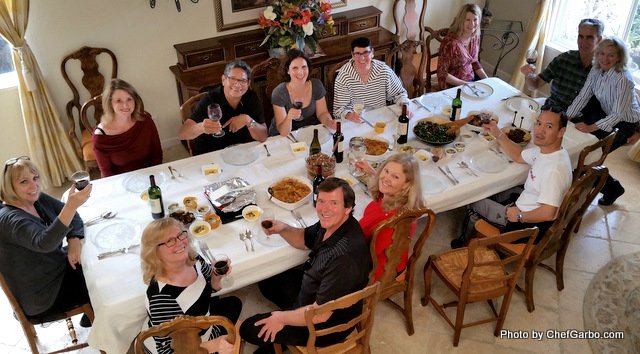

Pot Luck Dinner
As a result of all the goings on in the kitchen, we managed to get our pot-luck dishes onto the dining room table. We engaged in a lively and fantastic feast paired with wonderful wines and good cheer. It was an ambitious and educational field trip that Chef Bourget finessed quite elegantly. Most importantly, we walked away with our bellies full and our minds enriched because we experienced a remarkable day of adventure and learning from both Elizabeth Bourget and Art Seavey. We can’t thank them enough!
